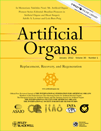Experimental Research With Synthetic Copolymer-Coated Cardiopulmonary Bypass Circuits: Inflammatory and Thrombogenicity Analysis
Abstract
This study aimed to assess complement system activation and index of thrombogenicity and platelet aggregation between synthetic copolymer-coated cardiopulmonary bypass (CPB) circuit and conventional CPB circuit. Twenty-six pigs were equally divided into two groups—the conventional group and the coated group. They were placed on CPB for 90 min, and blood samples were collected at three different time points (T0, right before CPB establishment; T1, 45 min after starting CPB; and T2, 90 min after starting CPB) to measure total count of inflammatory cells (leukocytes, neutrophils, lymphocytes, and platelets) and serum levels of fraction C3 of complement system. Upon completion of the 90-min CPB, fragments of different compartments of the CPB circuit were taken for assessing index of thrombogenicity and platelet aggregation. There were no differences between both groups regarding total count of leukocytes, neutrophils, and lymphocytes; however, there was a lower count of platelets at T2 in the coated group (P = 0.020). The serum level of fraction C3 was lower in the coated group at T1 (P = 0.020) and T2 (P = 0.017). Higher index of thrombogenicity and platelet aggregation were detected in the conventional group (77% of the animals within the conventional group) than in the coated group (46% of the animals within the coated group). In conclusion, in heart surgery requiring CPB, the use of synthetic copolymer-coated CPB circuit may be useful to reduce complement system activation, as well as attenuating index of thrombogenicity and platelet aggregation.




